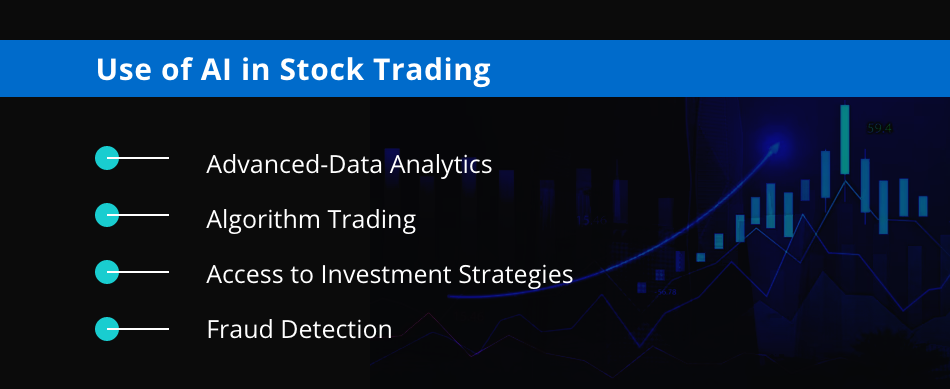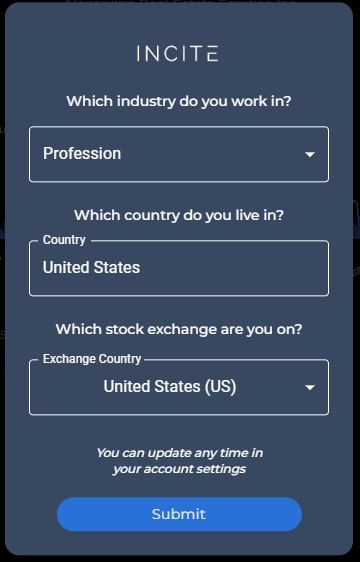To ensure you achieve the highest value, you must assess and price AI analysis and stock prediction platforms. Pricing structures can vary widely, and understanding what you're paying for is essential to make an informed decision. Here are 10 strategies to help you assess the price and cost of these platforms.
1. Know Pricing Model
Subscription-based: Determine whether the platform charges a monthly or annual cost, and also what features are offered in each tier.
Pay-per Use: Verify whether the platform charges on usage (e.g. the amount of trades executed or data requests, or even predictions).
Freemium: Check the extent to which a platform provides a limited free tier and adds additional charges to access premium features.
2. Compare Pricing Tiers
Examining the features that are included in each price tier (e.g. basic, professional, and enterprise).
Scalability: Ensure the pricing tiers are in line to your requirements, regardless of whether you're a trader on your own, professional, or an institutional member.
Upgrade flexibility: Check if it is possible to upgrade or downgrade your plan when you alter your needs.
3. Evaluate Hidden Costs
Data fees. Verify that the platform is charging a fee for access to premium data.
Brokerage fees - Make sure to see if any extra costs are charged by the platform for trade execution or integration with brokers.
API usage - Assess whether there are any additional costs that come with API access and/or high-frequency usage.
4. Demos and Trials are available for free
Trial period. Find platforms that offer trials or demos so that you can try their capabilities before you commit.
Check the limitations on the free trial. It might not contain all features.
Choice of no-commitment: Be sure you can cancel your trial at any time if it doesn't meet your requirements.
5. Check for discounts and promotional deals
Annual discounts: Verify whether the platform provides discounts for annual subscriptions compared to monthly plans.
Referral programs - Find out if there are any discounts or credits that you can use to refer new users.
Institutional pricing If you're part an organization larger than yourself, ask about bulk or institutional pricing.
6. Examine the Return on Investment (ROI)
Cost and value: Compare the price of a platform with its capabilities. Can it, for instance, help you to make better decisions in trading or help you save time.
Examine the platform's performance and user reviews to determine its potential ROI.
Alternative costs - Compare the platform's cost to the possible cost if you don't use it (e.g., missed opportunity, time spent on manual analysis).
Review Cancellation & Refund Policies
The cancellation policy should be followed: Ensure that you have the ability to cancel the subscription without penalty or charges.
Refund Policy: Verify whether your subscription allows an amount of money back if the subscriptions are not being utilized.
Auto-renewal (automatic renewal): Find out the reason you must renew your subscription automatically. Also, find out how to opt-out.
8. Assess Transparency in Pricing
A clear pricing page Check whether the platform has pricing pages that are complete, transparent, and does not include any hidden fees.
Customer support: If you have any queries regarding prices or additional costs Contact customer service.
Contract Terms: Check the terms of service for any long-term agreements or penalties.
9. Compare to Competitors
Compare the features and costs of different platforms to get the best possible deal.
User reviews: Read reviews from users on the platform, and decide if it's worth the money.
Review the market position of the platform. Does it meet your needs?
10. Calculate Long-Term Costs
Price increases: Find out whether and how often the platform increases its prices.
Additions to your plan: Determine if you need an upgrade or if latest features are included in your plan.
Cost for scaling The platform needs to be priced appropriately as your trading activities or data requirements rise.
Bonus Tips
Try multiple platforms. Compare the performance and value of multiple platforms by testing them during free trials.
Negotiate prices: If you're a large-volume user or part of an institution, inquire about discounts or custom pricing.
Consider checking for educational tools and resources. Many platforms provide free educational tools or materials which could be an excellent addition to the features they already have.
The following tips can aid you in evaluating the price and cost of AI analysis and stock prediction platforms. You can select one that fits your budget, while providing the features you require. A reputable platform will provide an appropriate balance of affordability and functionality, helping you achieve the best results from your trading. View the top rated read this post here about chart ai trading assistant for site examples including ai stock trading, stock ai, ai for investment, best ai for trading, ai stock trading bot free, ai investing platform, ai for investment, ai trading, ai trading tools, ai trading and more.

Top 10 Ways To Evaluate The Regulatory Conformity Of Ai Stock For Predicting Or Analyzing Platforms
When it comes to evaluating AI trading platforms, compliance with regulatory requirements is crucial. Compliance helps to ensure that the platform operates within legal frameworks and protecting user data. Here are the 10 best tips for evaluating the regulatory compliance of these platforms:
1. Check the Licensing and Registration
Regulators: Make sure the platform's license and registration is registered with the relevant financial regulators (e.g. SEC or FCA in USA, ASIC or ASIC in Australia).
Verify the broker partnership If your platform is integrated with brokers or brokers, you need to make sure they are also licensed and regulated.
Public records: Visit the website of the regulator to find out whether the platform was registered or if it has any time violated the law.
2. Assess the privacy of your data Compliance
GDPR - If your platform operates in the EU or serves users from the EU make sure that it complies with GDPR.
CCPA: California Consumer Privacy Act compliance is required for users.
Policies on handling data: Review the privacy policies of the platform to determine the way it describes data collection, storage, and sharing.
3. Examine Anti-Money Laundering (AML) Actions
AML policies: Ensure that your platform is armed with a solid AML policy to identify and stop any laundering of money.
KYC procedures - Verify that the platform adheres to Know Your Customer procedures for verification of user identities.
Monitoring transactions: Find out whether the platform can monitor transactions and reporting any suspicious activities to the relevant authorities.
4. Verify compliance with Trading Regulations
Market manipulation: Make sure that the platform contains measures to stop market manipulations such as fake trading, wash trading.
Order types: Check whether the platform is in compliance with rules regarding order types.
Best execution: Verify that the platform is following best execution practices to ensure trades are executed for the best price.
5. Cybersecurity Compliance:
Data encryption - Ensure that the platform is using encryption to protect data while in transit or while at rest.
Incident response: Verify if the platform has a clear incident response strategy for cyberattacks or data breaches.
Certifications: Determine if the platform holds cybersecurity certifications (e.g., ISO 27001, SOC 2).
6. Transparency & Disclosure:
Fee disclosure: Ensure the platform clearly discloses any fees, any hidden or additional charges.
Risk disclosure: Ensure that the platform has disclosed the risks involved, particularly in the case of high-risk strategies or trading using leverage.
Performance reporting: Verify that the platform provides honest and precise reports regarding its AI models.
7. Check for Compliance with International Regulations
Trans-border trade If you are trading internationally, you must ensure that the platform complies with laws in all jurisdictions that apply to it.
Tax reporting: Find out if a platform has tools or reports that allow users to follow tax regulations.
Conformity with international sanctions: Ensure that your platform is in strict compliance with these rules and does not allow transactions between countries or entities that are banned.
8. Examine Record-Keeping and Audit Trails
Records of transactions: The platform must maintain detailed records on the transactions that are used for audit and regulatory reasons.
User activity logs: Check if your platform records all activity of users, like transactions, logins, as well as account settings changes.
Audit-readiness: Find out if the platform is capable of generating all the required documentation and logs for an audit by a regulatory agency.
9. Examine compliance with AI-specific Regulations
Algorithmic rules of trading: If a platform supports the use of algorithms, it has to be in compliance with European regulations, such as MiFID II and U.S. Reg SCI.
Bias and Fairness: Verify that the platform is monitoring, and mitigates, biases within its AI models to ensure fair trading.
Explainability. Certain regulations could require the platform to explain AI-driven prediction and decisions.
Review User Feedback and Regulatory History
User feedback: Review user reviews to gauge the reputation of the platform for compliance with the law.
The history of regulatory compliance - determine if the website is known for any past penalties or violations of regulations.
Third-party inspections: Determine if the platform is subjected periodic third-party inspections conducted by an independent party in order to ensure the platform's compliance.
Bonus Tips
Legal consultation: Consult an attorney to make sure that the platform meets all applicable regulations.
Trial period. You can use the trial or demo of the platform to test its compliance features.
Customer Support: Ensure that the platform offers customer support for any queries or issues with compliance.
These suggestions will assist you to assess the compliance of AI trading platforms that can predict or analyze the prices of stocks. So you'll be able select a platform that works within the legal frameworks and also protects your. Compliance not only lowers the legal risk but also builds trust in a platform's service. Read the best best ai trading platform for more examples including ai stock price prediction, best ai penny stocks, stocks ai, how to use ai for copyright trading, ai tools for trading, ai stock investing, free ai stock picker, can ai predict stock market, ai in stock market, invest ai and more.
